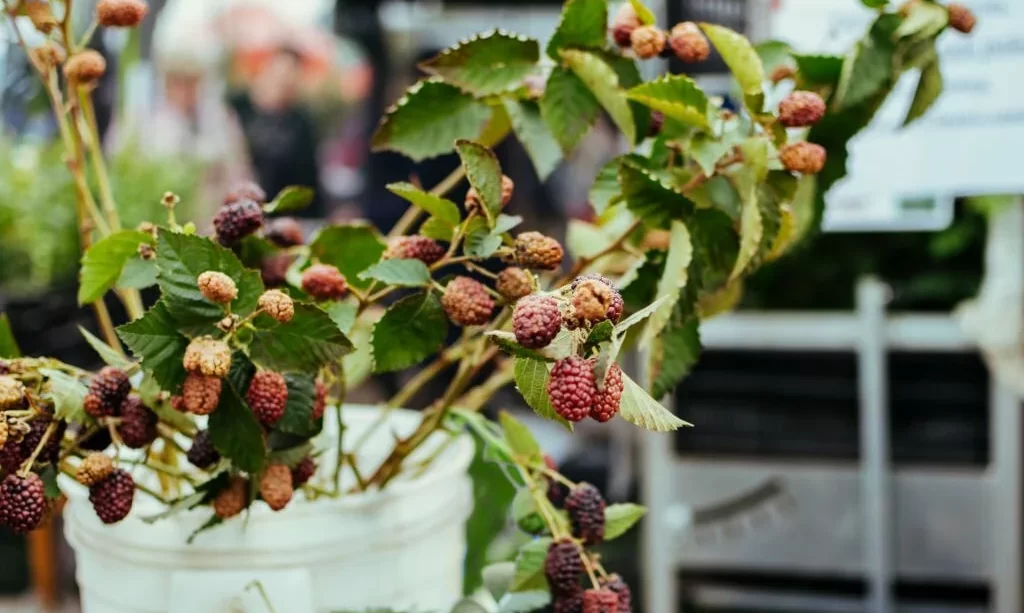In the rhythmic dance of garden care, the decision to transplant raspberries can breathe new life into your berry patch. This transformative process offers a chance to invigorate the health and productivity of your raspberry plants. As we embark on this journey, envision a thriving berry patch bursting with vibrant foliage and succulent fruits. In this guide, we’ll explore the art of transplanting raspberries, providing you with a step-by-step roadmap to ensure your plants not only survive but flourish in their new home.
Assessing the Right Time
Timing is everything when it comes to transplanting raspberries. Choosing the opportune moment ensures a smoother transition for your plants. Aim for early spring or late fall, during the dormant seasons. This strategic timing minimizes stress on the plants, giving them the best chance to establish themselves in their new location. Before you embark on this gardening endeavor, acquaint yourself with the seasonal nuances that will set the stage for a successful raspberry transplant.
Choosing the Right Location
Selecting the perfect spot for your raspberry plants is akin to choosing a home for a dear friend. Consider factors such as sunlight exposure, soil quality, and drainage. Optimal conditions include well-draining soil and a sunny location. Prepare the new site in advance, ensuring it’s free of competing weeds and the soil is primed for your raspberries’ relocation. As we delve into the transplanting process, remember, a well-chosen location is the cornerstone of a thriving raspberry patch.
Preparing the Raspberry Plants
Before the delicate dance of transplanting begins, prepare your raspberry plants for their journey. Start by judiciously pruning the canes, removing any damaged or overly long growth. This not only streamlines the plants but also encourages new, vigorous growth in their new home. Equally important is ensuring the plants are well-hydrated before the move. Give them a good drink a day or two before the transplant to fortify their resilience. Armed with a trimmed and hydrated demeanor, your raspberries are poised for a successful transition.
Digging Up the Raspberries
With your raspberry plants prepped and ready, the spotlight shifts to the careful excavation of their root systems. Utilize a sharp shovel to dig around the plants, creating a generous root ball. The goal here is to lift the plants with as much of their root structure intact as possible. This not only eases the transplant shock but also sets the stage for a quicker acclimation to their new surroundings. As you gently extract the raspberries from their current home, envision the promise of fresh growth and abundant harvests in the seasons to come.
Transplanting Process
The moment has arrived to usher your raspberries into their new abode. As you plant, adhere to the principle of proper spacing, ensuring each raspberry has room to stretch its roots and grow. Place the plants at the appropriate depth, covering the roots with soil and patting it down gently. This step-by-step transplanting process is a delicate ballet, one that establishes the foundation for the thriving berry patch you envision. With each plant finding its place in the soil, you’re not just transplanting raspberries; you’re orchestrating a symphony of growth and renewal in your garden.
Watering and Mulching
After the transplanting ballet, it’s time to ensure your raspberries feel right at home. Begin by giving them a thorough watering immediately after planting. This initial drink helps settle the soil and provides much-needed hydration to the transplanted roots. To further support their transition, apply a generous layer of mulch around the base of each plant. Mulching serves as a protective blanket, conserving moisture, suppressing weeds, and insulating the soil. Together, proper watering and mulching create a nurturing environment that encourages your raspberries to put down new roots and thrive in their new location.
Post-Transplant Care
As your raspberries settle into their fresh digs, ongoing care becomes the key to a successful transplant. Regular watering is essential, especially in the initial weeks post-transplantation. Monitor the plants closely for any signs of stress, adjusting your care routine accordingly. Introduce a balanced fertilizer to provide the nutrients needed for robust growth. Be attentive to the evolving needs of your transplants, and soon you’ll witness the rewards of your efforts as they adapt, flourish, and contribute to a flourishing berry patch.
Troubleshooting and Common Issues
In the gardening journey, challenges may arise, but armed with knowledge, you can troubleshoot and overcome them. Watch for signs of transplant shock, such as wilting or yellowing leaves, and adjust your care practices accordingly. Address any pest issues promptly and be mindful of soil conditions. If challenges persist, consider seeking advice from local gardening resources or experts. By being proactive and attentive, you can navigate common issues and guide your raspberries toward thriving in their new environment.
Conclusion
As the final curtain falls on the transplanting process, take a moment to revel in the potential that now resides in your garden. Through thoughtful preparation, careful transplantation, and attentive post-care, you’ve orchestrated a symphony of growth. Your raspberries, once confined, are now free to stretch their roots and reach for the sunlight. As the seasons unfold, anticipate the sweet rewards of your labor—plump, juicy raspberries adorning healthy canes. With each passing harvest, you’ll not only savor the fruits of your gardening expertise but also witness the enduring vitality of a well-transplanted raspberry patch.



